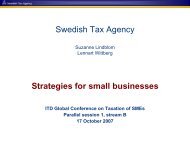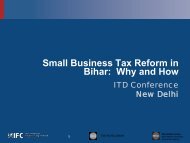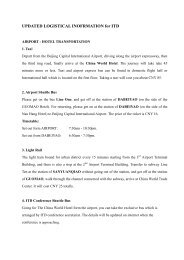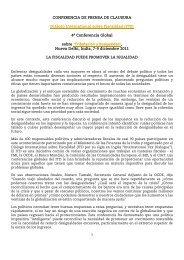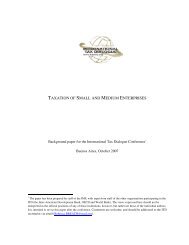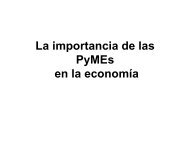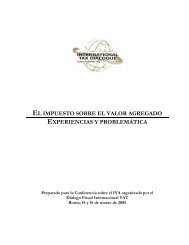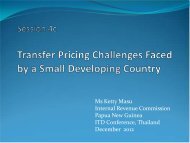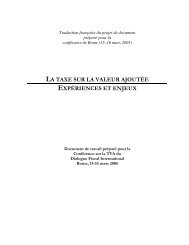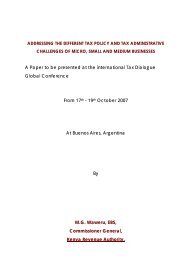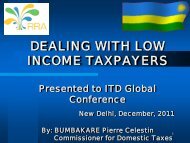Arcotia Hatsidimitris - International Tax Dialogue
Arcotia Hatsidimitris - International Tax Dialogue
Arcotia Hatsidimitris - International Tax Dialogue
You also want an ePaper? Increase the reach of your titles
YUMPU automatically turns print PDFs into web optimized ePapers that Google loves.
102 – ANNEX D<br />
• Group members who have acquired, created or enhanced an asset that is used by other group<br />
members, perhaps by incurring expenditure on research and development leading to the<br />
creation or enhancement of intellectual property.<br />
• Companies with innovative business structures.<br />
• Significant group reorganisations involving business transfers overseas.<br />
• Transactions with tax havens or shelters.<br />
• Companies in a commercial relationship with a related party where non-tax factors provide<br />
incentive for manipulation (regulatory requirements involving customs valuations, antidumping<br />
duties, currency exchange or price controls, or cash flow incentives within a group<br />
affecting where profit is reported or how dividends are financed).<br />
• Loss making companies in commercial relationship with a lower marginal rate taxpayer<br />
where the loss is as a result of payments to that entity.<br />
In addition, risks arise where transfer pricing policies and methodologies are not up to date and<br />
do not or no longer accurately reflect the operation and management of the business.<br />
How risk assessment is undertaken<br />
Country basis<br />
• The statutory tax rates of the countries in which the group operates are examined, in order to<br />
determine whether there is any identifiable incentive for moving profits around the group.<br />
Transactions with tax havens are by nature higher risk and are selected for detailed<br />
examination.<br />
• The effective tax rate (ETR) in each country is calculated and compared with the standard<br />
rates present in each country. If the ETR is significantly different from the standard tax rate,<br />
this is examined in further detail and variances explained.<br />
• Countries in which the tax authority is known to be aggressive in respect of transfer pricing<br />
or where OECD methodologies are not followed are highlighted for more detailed review.<br />
Business basis<br />
• The business model commonly employed by the group is examined. This includes analysis<br />
of the key function providers, asset holders and risk takers of the group.<br />
• In addition, the share price strategy of the group is monitored. For example, is there an<br />
incentive to move profits to the shareholder (dividend paying) entity (e.g. Australian<br />
imputation credit rules)?<br />
• Local profit margin is analysed in reference to that company’s activities within the group.<br />
• Local profit margin is compared with the group profit margin, to identify whether this rate is<br />
in line with the group as a whole.<br />
DEALING EFFECTIVELY WITH THE CHALLENGES OF TRANSFER PRICING © OECD 2012



